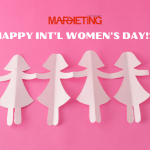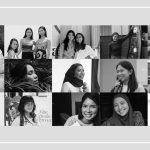
What is the prevalent view of women in advertising; does objectification and sexism remain a problem or do you see a shift?
Farrah: The objectification of women and sexism in advertising is a tale as old as time.
Today it is sad to see, while a woman’s role in society has changed, her objectification persists.
With awareness and feministic ideas, brands that make the unfortunate mistake of blatantly being sexist are not lightly tolerated.
Add that to the amplification that happens thanks to social media, such disregard often gets called out and highlighted.
So how does one address objectification that is subtle; the stuff that is so ingrained in our lives it goes unnoticed? Let’s not forget the potential effects on the psyche of young girls can be damaging.
I’m talking about the constant projection of flawless, airbrushed and almost perfect women – this can severely undermine women’s self-esteem.
Do both genders believe through marketing that such beauty is attainable through the purchase of such products?
Unfortunately, yes.
This is a general statement, but it is human nature to be attracted to beautiful things and people. Selling women (and men) the dream of success, beauty and the pursuit of perfection is a very lucrative business.
There are many advertising campaigns that are moving away from this by celebrating diversity…
I believe so. As brands seek to cater to a younger and increasingly diverse consumer base, they slowly become more progressive.
This in turn educates the public about the value of inclusivity, turning it into a virtuous cycle.
The brand that I grew up with which championed diversity was The United Colors of Benetton.
They redefined my idea of beauty by showing that it comes in more ways than just fair skin and blue eyes, which was empowering.
More recently, the success of Dove’s campaign is a good example of how ads can celebrate diversity.
Many brands and female models have begun to shun Photoshop and instead go for a realistic image. Do you think this will make for stronger better ads? Or people will continue to purchase riding on the appeal of a beautiful sexy woman?
For every model that insists to appear in their natural beauty, there are others who go to great lengths to camouflage their flaws. It will take a long time before this changes completely.
To sell a dream, one needs to create an illusion. This should change, but many brands are not ready to rock the boat just yet.
At BBDO Malaysia for example, we launched the “Let’s Get Real” campaign for Libresse, calling out sanitary pad ads’ convention of using unrealistically happy and active girls. It was a great success, because consumers resonate with our message of being real.
With more campaigns like these, I hope we can slowly convince clients that `realness’ and diversity in ads is the right way to go.
Do you think the future will see less stereotypes like the ideal homemaker/nurturer, the fraught career woman juggling home and career, the tough- talking working woman, the sex goddess and bimbo etc?
I do think so. We are evolving as a society and as we evolve, women will demand to see more realistic representations. Further, our industry can do its bit in nudging society towards the right direction.
BBDO India’s “Share The Load” campaign, for example, boldly tackled the misconception that it is always a woman’s duty to take care of the household.
Here in BBDO Malaysia, we have the “Heels Of Steel” initiative where successful women of various industry share their insight and advice on workplace advancement. The more we highlight successful women, the more we are able to showcase how different each one of them are, and how we refuse to be neatly boxed into conventional stereotypes.
MARKETING Magazine is not responsible for the content of external sites.
An afternoon of conversations we never had, with leaders most of you never met.
Discover what’s possible from those who made it possible. Plus a preview of The HAM Agency Rankings REPORT 2024.
Limited seats: [email protected]
BOOK SEATS NOW









